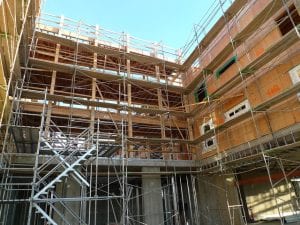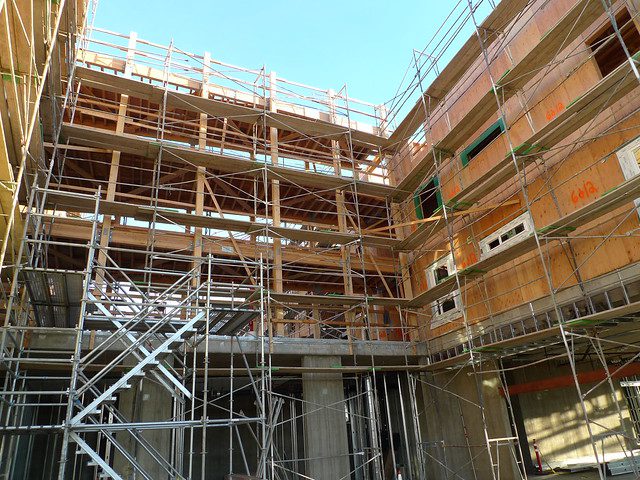
New affordable housing is built in Sacramento. Photo by Mark Hogan via flickr, CC BY-SA 2.0
Last month two former HUD secretaries, Henry Cisneros and Mel Martinez, threw their expertise and commitment to affordable housing behind Habitat for Humanity’s Cost of Home campaign. The need for affordable housing continues to grow, and as the former secretaries suggest, more action is needed at the local and state levels as the federal government’s support for affordable housing wanes.
One housing affordability strategy that is often overlooked is the preservation of naturally occurring affordable housing (NOAH)—existing housing that is currently affordable for modest-income homeowners and renters, often found in urban and older suburban neighborhoods in danger of decline or gentrification. Now called middle neighborhoods, these neither high-poverty nor affluent areas are the remnants of a vast number of one-time working-class and middle-class communities. There is a mini-movement underway in some American cities to protect middle neighborhoods from decline or gentrification. The recognition of middle neighborhoods and the movement underway to preserve them, and the NOAH housing in them, began when the Federal Reserve Bank of San Francisco and The American Assembly collaborated to produce On the Edge: America’s Middle Neighborhoods in late 2016.
Reports from practitioners and research underway now indicate that the majority of middle neighborhoods in legacy cities are in danger of decline, with the housing in them deteriorating or going vacant instead of becoming a long-term source of sound affordable housing. Conversely, in a more limited number of cities, prices in some middle neighborhoods are on the rise, shrinking these cities’ affordable housing stock.
Local governments and nonprofit groups in Baltimore, Philadelphia, Des Moines, Plano, Cleveland, and elsewhere are learning techniques on how to preserve naturally occurring affordable housing in their middle neighborhoods. While these efforts are promising, far more energy and resources are needed to protect these neighborhoods.
Local governments have limited resources. And it there is a critical role for the federal government to play. The Neighborhood Housing Investment Act (NHIA), introduced by Reps. Brian Higgins (D-N.Y.) and Mike Kelly (R-Pa.), would stimulate private investment in an estimated 500,000 homes over the next 10 years that, because of their poor condition, depress nearby property values and thwart broader revitalization efforts. If passed, the NHIA legislation will provide the critical capital needed by small and mid-sized developers in neighborhoods where the cost of purchasing and repairing a deteriorating house exceeds its market value creating a value gap. This gap, no matter how small, is mighty enough to cause developers to veer away from modest neighborhoods toward green fields and stronger markets where the “numbers pencil out.” NHIA would make it possible to redirect developer resources and expertise to neighborhoods with streets, sewers, sidewalks, and schools already in place and enable them to preserve hundreds of thousands of existing affordable houses now teetering precariously between productive reuse and irreversible decline.
As we think about future housing policy, we need to be careful that we don’t focus so much on increasing production of new housing—important as that is—that we lose sight of a vast resource of affordable housing hiding in plain sight that can be preserved for the long-term for a modest fraction of the cost of building new.





Solving the appraisal gap problem would benefit many affordable housing sectors – including nonprofit LIHTC rehabbers and even homeowners who cannot access loans in communities of color after decades of low appraised values. Passage of this legislation will be a game changer!